The Impact of Climate Change on Wildlife Migration Patterns
In the big picture of nature, wildlife migration is like a movie show that animals put on. It’s their way of keeping everything in balance.
But here’s the plot twist: climate change is messing with their amazing journey.
As the weather gets unstable, animals are struggling to keep up.
Through this blog post, let’s take a ride to discover why wildlife migration is like a blockbuster movie, Where their ptrotagonists (Animals) travel across the globe. And Climate Change acts like a movie villain which is making things difficult for our animal stars.
Let’s understand why we need to cheer for these migrating heroes and do our part to protect their incredible journeys.
Understanding Wildlife Migration
Imagine you’re on a grand adventure. Now, think about animals doing the same but in a much cooler way—wildlife migration! It’s like a global road trip but with fins, wings, or paws.
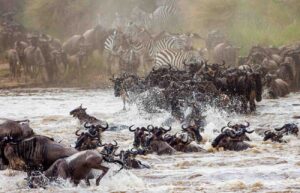
These creatures, big and small, travel across continents for a reason. Migration is their secret superpower, keeping ecosystems in harmony.
The magic of migration:
- Birds soaring across the sky
- Whales navigating vast oceans
- Even tiny butterflies fluttering great distances
They aren’t just globetrotters; they’re nature’s architects, helping plants grow and balancing the circle of life.
Now, picture climate change as a tricky obstacle course on their journey. It messes with temperatures, seasons, and the places they call home.
Our migrating buddies are facing challenges, and we need to understand their epic migrations to help them overcome these hurdles.
Factors Influencing Wildlife Migration
Wildlife migration is nature’s grand plan.
Animals follow invisible signs that tell them where to go.
These signals are a mix of ancient wisdom and Mother Nature’s cues.
Changing seasons, temperature shifts, and the Earth’s magnetic pull are like GPS guiding animals on their migration routes.
Along with climate change, there is one biggest obstacle in this migration. HUMANS.
We have altered landscapes and noise to nature.
Cities, roads, and climate change are like unexpected detours on the animal highway, making their epic migrations more challenging.
So, these animals are dealing with double problems — natural factors they’ve known for centuries and the new challenges humans have unintentionally thrown their way.
Climate Change as a Disruptor
Climate change is a threat to the wildlife migration. The usual pattern changes daily, creating problems like temperature and rain increases.
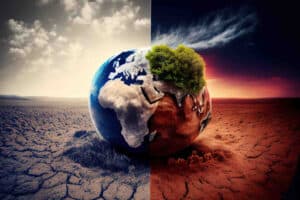
Animals have been following nature for ages; they know when to migrate for better weather, food, or breeding grounds. But with climate change, winters might get late, springs might be hotter, and summers could be cold.
These things should stay the same for easy migration because animals often rely on the weather.
Flowers bloomed at odd times, insects appeared unexpectedly, and the food buffet they were expecting might need to have been prepared. Some of them adapt to these conditions, but others do need to.
Climate change becomes an uninvited guest, disrupting the natural flow, and making hit arder for animals to migrate. If we tackle this climate change, we will save the planet and ensure that wildlife can be kept for centuries.
Case Studies of Affected Species
Here are some examples of species that have changed their migration patterns due to climate change:
- Mule deer and Bewick’s swans: These species have changed their migration routes in response to climate change.
- Chinook salmon: Rising temperatures have led to the migration of Chinook salmon to Arctic rivers.
- North American tree swallows: These species have changed their behavior by breeding earlier.
- Monarch butterflies: These species have changed their migratory behavior in recent years due to habitat alterations.
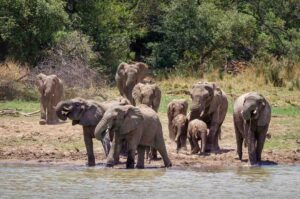
Adaptation Strategies
In the ever-evolving migration, some species are hitting the adaptability notes.
For example, Arctic Tern, these feathered globetrotters travel from the Arctic to the Antarctic and back, chasing endless summers.
To cope, Arctic Terns have shifted their migration routes and timings. It’s like they have a new way of survival mix that helps them follow the food trail despite changing weather patterns. This adaptation is crucial for species facing migration disruptions.
Human-Wildlife Conflict
Humans play a vital role in wildlife migration.Wildlife seeking new routes due to climate shifts might stumble upon human territories, triggering conflicts.
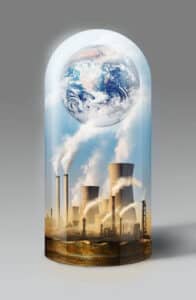
Elephants, for example, might wander into villages in search of food, sparking concerns and clashes.
To harmonize this, conservationists and communities are working in different ways.
From constructing wildlife-friendly corridors to using innovative technologies like sensor-triggered alarms, these solutions aim to create a balanced world. By fostering coexistence, we ensure that humans and wildlife can live easily in their respective worlds without troubling anyone.
It’s a collaboration where humans and wildlife can share the world gracefully.
Conservation Efforts
In the big picture of nature, people are working hard to help animals that move from one place to another.
They’re creating safe areas, teaching about caring for the environment, and ensuring everyone knows how important it is to keep the anima; travel routes safe.
But this story isn’t just about one place—it’s a worldwide effort.
Countries are teaming up, forgetting about borders, to ensure these animals have a safe journey. Everyone is holding hands to take care of our special traveling animal friends.
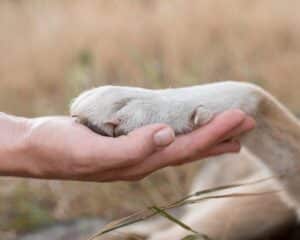
Future Implications and Action
If we look ahead and don’t focus on climate change, wildlife could be in danger. During wildlife migration, animals might lose their way or need help finding enough food.
But, if we all work together and try to stop this climate change and take care of our planet, we can make a difference.
Every small action, like using less energy or planting trees, has a significant impact.
It’s like saying, “Hey, animals, we’re here for you and want you to have safe journeys forever.”
So, let’s team up and make sure wildlife migration stays a beautiful and natural wonder for generations to come.
Conclusion
To conclude, it is clear that climate change is affecting the journey of wildlife.
The bond between climate change and wildlife migration is like a puzzle we must solve together.
By understanding this and taking action against climate change, we can protect these incredible journeys and the animals that make them.
It’s a team effort, and each of us plays a vital role. So, let’s stand united, take on climate change, and keep our planet a safe and welcoming home for all creatures, big and small.
Our collective efforts today will shape a brighter, more sustainable tomorrow.
Ready to make a positive impact in the world?
UPDEED is the place for you. Our free and open platform is filled with inspiring stories from individuals and organizations who are making a difference in their communities and beyond. Connect and collaborate with like-minded individuals from around the globe on UPDEED, and discover your own potential to create meaningful change. Join our community and make a difference.





